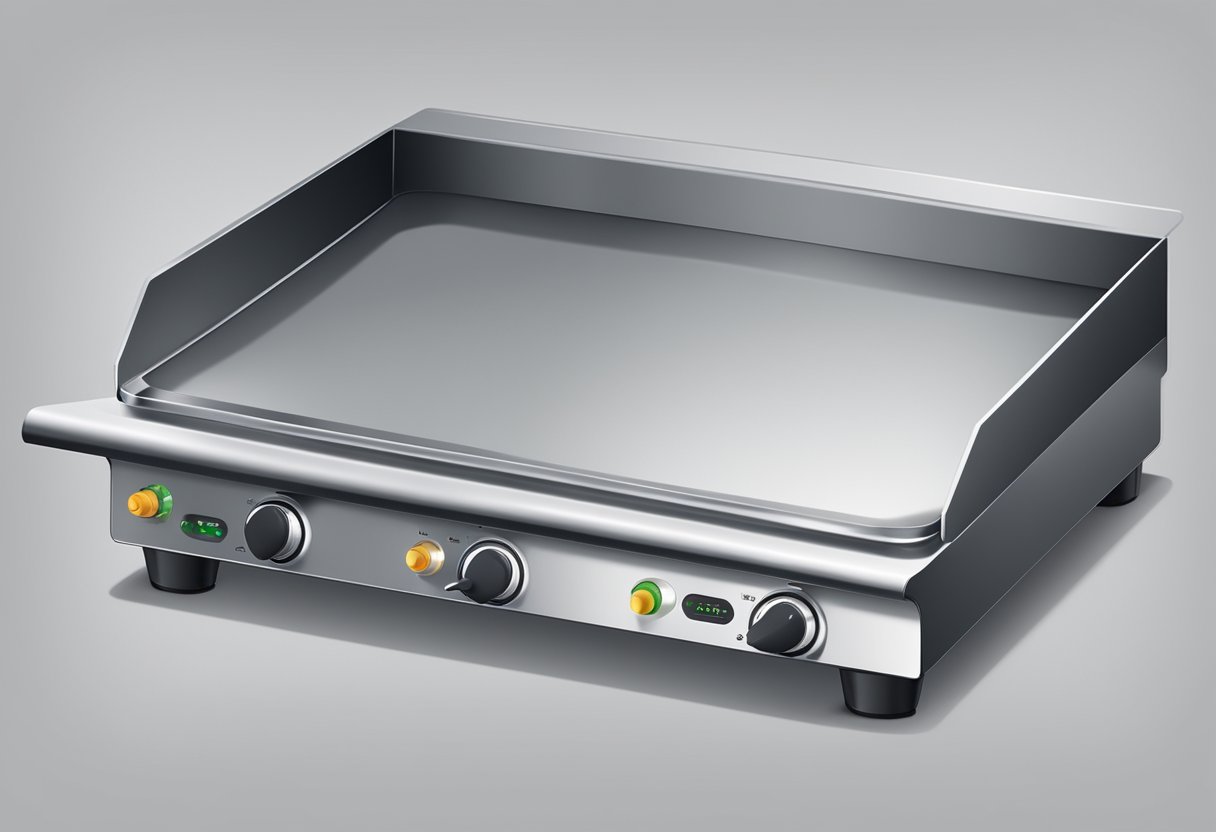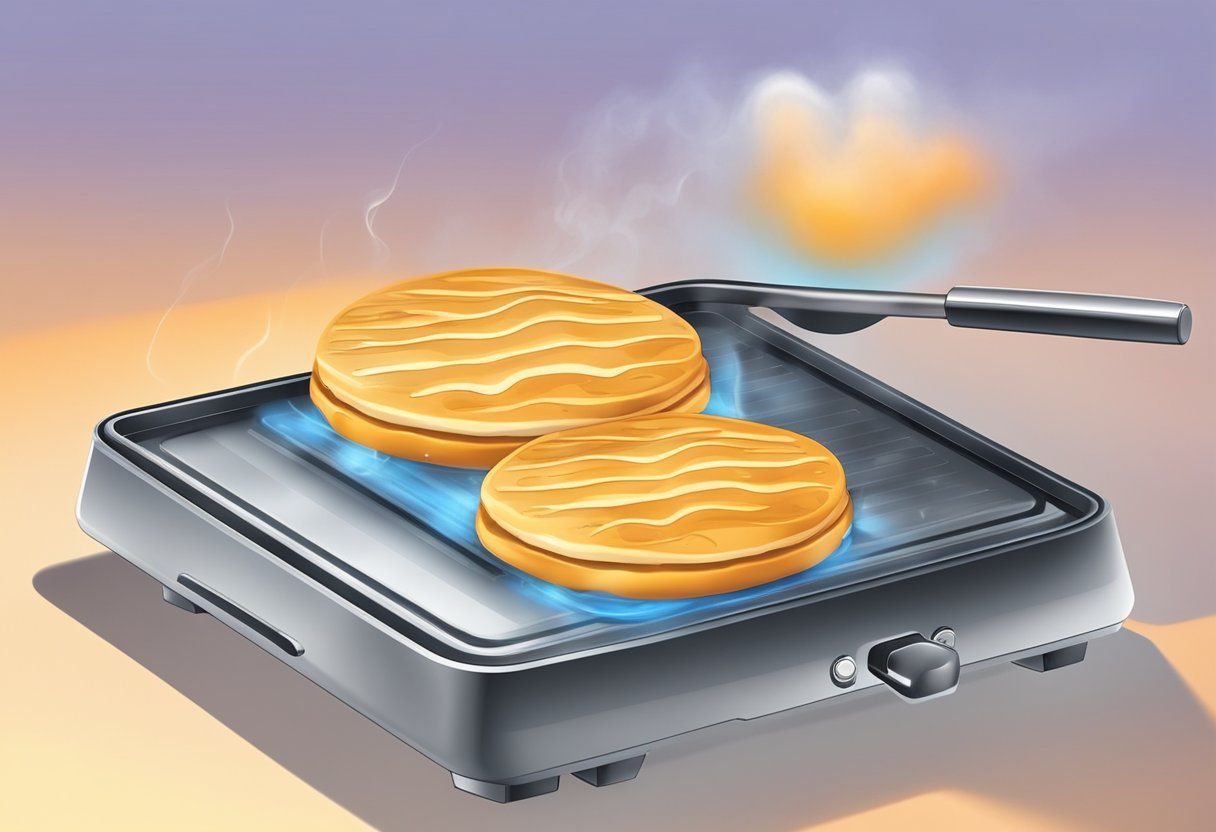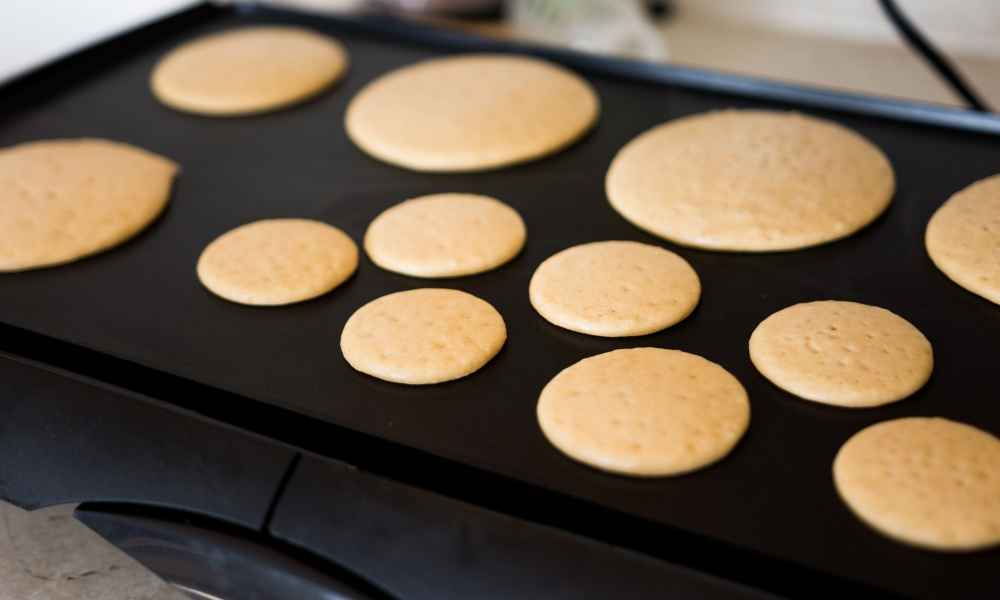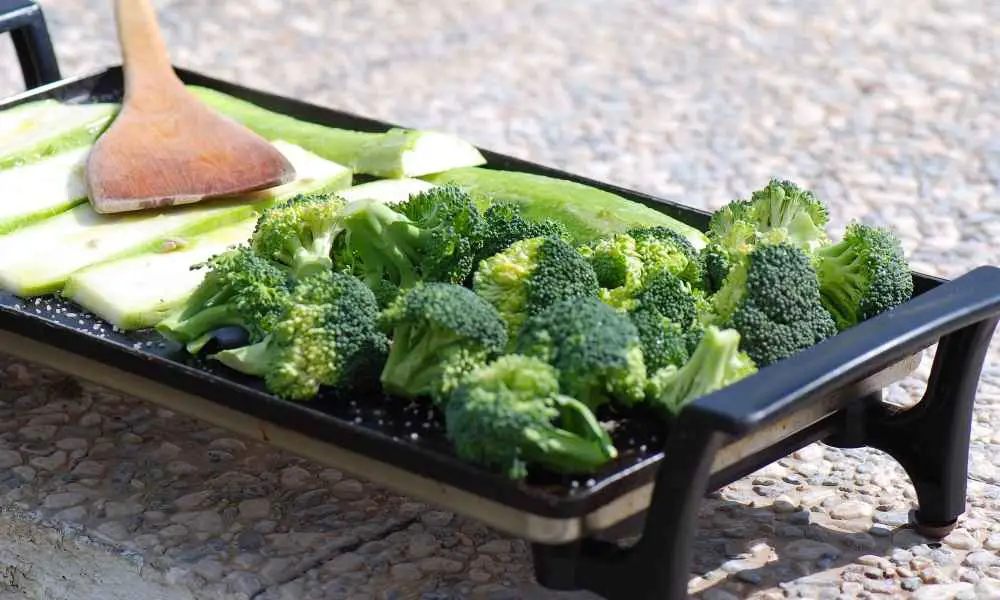Are you having trouble getting your griddle to heat up? There are a few common reasons why your griddle might not be getting hot enough, and it’s important to identify the cause in order to fix the problem. One of the most common reasons is an empty propane tank. Propane is a type of fuel that is commonly used in outdoor cooking, and if your tank is empty, your griddle won’t heat up properly. Check your propane tank first before trying anything else.

Another reason why your griddle might not be getting hot enough is a faulty temperature control. The temperature control is the component of the griddle that regulates the heat, and if it’s damaged or defective, it may not be able to regulate the heat properly. This can cause the griddle not to get hot enough. If you suspect that the temperature control is the problem, try replacing it to see if that resolves the issue.
If your griddle still isn’t getting hot enough after checking the propane tank and replacing the temperature control, there may be other issues at play. It’s important to troubleshoot the problem systematically to identify the root cause and come up with an effective solution. In the following sections, we’ll take a closer look at some of the most common reasons why your griddle might not be getting hot enough, as well as some tips for troubleshooting and fixing the problem.
Understanding Your Griddle
https://www.youtube.com/watch?v=XhdxmvAykqs&embed=true
When it comes to cooking on a griddle, it’s important to understand how it works. A griddle typically has a flat cooking surface made of steel or other durable materials. Underneath the cooking surface, you’ll find burners that provide the heat necessary for cooking. The propane tank supplies fuel to the burners, and the regulator controls the flow of gas.
To get the most out of your griddle, it’s important to understand how the heat is distributed across the cooking surface. Some areas of the griddle may be hotter than others, so it’s important to know where to place your food for even cooking.
Most griddles come with a temperature control knob that allows you to adjust the heat output. This is especially important when cooking foods that require different temperatures, such as pancakes and burgers.
It’s also important to keep your griddle clean to ensure it functions properly. Grease and debris can build up on the cooking surface, which can affect the heat distribution and cause the griddle to not get as hot as it should. Regular cleaning with a griddle scraper and hot water can help keep your griddle in top shape.
Overall, understanding how your griddle works and how to use it properly can help you achieve delicious and evenly cooked meals every time.
Common Reasons for Griddle Not Getting Hot
https://www.youtube.com/watch?v=po8b0VvA65I&embed=true
If you are having issues with your griddle not getting hot, it can be frustrating. However, there are a few common reasons why this may be happening. In this section, we will discuss some of the most common reasons why your griddle may not be getting hot.
Faulty Power Source
One of the most common reasons why your griddle may not be getting hot is due to a faulty power source. If your griddle is electric, make sure that it is plugged in and that the outlet is functioning properly. If your griddle is gas-powered, make sure that the propane tank is full and that the regulator is functioning properly.
Broken Thermostat
Another reason why your griddle may not be getting hot is due to a broken thermostat. The thermostat is responsible for regulating the temperature of the griddle, so if it is broken, it may not be able to maintain the desired temperature. If you suspect that your thermostat is broken, you may need to replace it.
Damaged Heating Element
The heating element is responsible for generating heat on your griddle. If it is damaged or not functioning properly, your griddle may not be able to get hot. If you suspect that your heating element is damaged, you may need to replace it.
In conclusion, if your griddle is not getting hot, it may be due to a faulty power source, broken thermostat, or damaged heating element. By identifying the problem and taking the appropriate steps to fix it, you can get your griddle back up and running in no time.
Signs of a Malfunctioning Griddle

If your griddle is not getting hot, it may be malfunctioning. Here are some signs that your griddle may not be working properly:
-
Uneven heating: If the griddle heats up unevenly, with one side hotter than the other, it may be a sign of a malfunctioning heating element or burner. This can cause food to cook unevenly and may result in burnt or undercooked food.
-
No heat: If the griddle does not heat up at all, it may be a sign of a faulty heating element, a malfunctioning thermostat, or a problem with the power supply. Check to make sure that the griddle is plugged in and that the outlet is working properly.
-
Excessive smoke: If the griddle produces excessive smoke, it may be a sign that the griddle is not heating up properly. This can be caused by a number of factors, including a dirty griddle surface, a malfunctioning burner or heating element, or a problem with the fuel supply.
-
Warping: If the griddle surface warps or becomes uneven, it may be a sign of a malfunctioning heating element or burner. This can cause food to cook unevenly and may result in burnt or undercooked food.
-
Rusting: If the griddle surface rusts, it may be a sign that the griddle is not being properly cleaned or maintained. Rust can also be caused by exposure to moisture or other environmental factors.
If you notice any of these signs, it is important to address the issue as soon as possible. Ignoring a malfunctioning griddle can lead to further damage and may result in the need for costly repairs or replacement.
Immediate Steps to Take
If your griddle is not getting hot, don’t panic. There are a few immediate steps you can take to troubleshoot the issue and get your griddle up and running again.
First, check the propane tank. Make sure it is properly connected and turned on. If the tank is empty, replace it with a new one. If the tank is not empty, try turning it off and then back on again to reset the gas flow.
Next, check the burners. Make sure they are clean and free of debris. If they are clogged, use a wire brush or a toothbrush to clean them out. If they are damaged, replace them.
Check the igniter. With a press of a button, the igniter creates a spark that lights the griddle or the gas escaping from the burners to be precise. If the igniter is not working, try lighting the griddle with a match or a lighter. If the griddle still doesn’t light, the igniter may need to be replaced.
Check the griddle top. Make sure it is clean and free of debris. If it is dirty, use a scraper or a spatula to remove any excess food or grease. If it is damaged, replace it.
If none of these steps work, it may be time to call a professional. A qualified technician can diagnose the problem and make any necessary repairs.
Remember, safety should always be your first priority when working with a griddle. Always follow the manufacturer’s instructions and use caution when handling hot surfaces.
Professional Repair Vs DIY
If your griddle is not getting hot, you may be wondering whether to call a professional repair service or try to fix it yourself. Both options have their pros and cons, so it’s important to weigh them carefully before making a decision.
Professional Repair
Hiring a professional repair service can be a good option if you’re not comfortable working with electrical or gas systems, or if you don’t have the necessary tools and equipment. A professional repair service can diagnose the problem quickly and accurately, and can often fix it on the spot.
However, professional repair services can be expensive, and you may have to wait several days or even weeks for an appointment. In addition, if your griddle is old or outdated, it may be more cost-effective to replace it rather than repair it.
DIY
If you’re handy with tools and have some experience working with electrical or gas systems, you may be able to fix your griddle yourself. DIY repairs can be more cost-effective than hiring a professional, and you can often find step-by-step instructions and video tutorials online.
However, DIY repairs can be time-consuming and can also be dangerous if you’re not familiar with the proper safety procedures. In addition, if you don’t diagnose the problem correctly or make a mistake during the repair process, you could end up causing more damage to your griddle.
Ultimately, the decision to hire a professional repair service or try to fix your griddle yourself depends on your level of expertise and comfort with DIY repairs, as well as the age and condition of your griddle. If you’re not sure which option is right for you, it’s always a good idea to consult with a professional before attempting any repairs yourself.
Prevention Measures
https://www.youtube.com/watch?v=CHov4X5bQuw&embed=true
To avoid your griddle not getting hot, there are some preventive measures you can take. These measures include regular maintenance and proper use of the griddle.
Regular Maintenance
Regular maintenance of your griddle is crucial to ensure it functions optimally. Here are some maintenance tips to keep your griddle in top shape:
-
Clean the griddle after every use: After cooking, remove any leftover food particles and grease from the griddle surface. Use a scraper or spatula to scrape off any food residue, and then wipe the surface with a clean cloth or paper towel.
-
Check the propane tank: Make sure the propane tank is not empty. If it is, replace it with a new one.
-
Check the burners: Check the burners for any clogs or debris. If there is any, clean it with a brush or a toothpick.
-
Check the ignition system: Ensure the ignition system is functioning correctly. If it is not, replace the batteries if necessary.
Proper Use of Griddle
Using your griddle appropriately is also crucial to prevent it from not getting hot. Here are some tips to ensure proper use of the griddle:
-
Preheat the griddle: Preheat the griddle for at least 10-15 minutes before cooking. This allows the griddle to reach the desired temperature.
-
Use the right cooking oil: Use cooking oil with a high smoke point, such as vegetable oil, canola oil, or peanut oil. This prevents the oil from burning and causing the griddle to smoke.
-
Avoid overcrowding the griddle: Overcrowding the griddle can cause the temperature to drop. Leave enough space between the food items to allow for proper cooking.
-
Adjust the temperature: Adjust the temperature according to the type of food you are cooking. For example, cook meat at a higher temperature than vegetables.
By following these preventive measures, you can ensure your griddle functions optimally and avoids not getting hot.
Conclusion
https://www.youtube.com/watch?v=HO1QINr_XJo&embed=true
In conclusion, troubleshooting your electric or Blackstone griddle not getting hot can be frustrating. However, with the right steps, you can identify and fix the issue quickly.
First, check the settings on your electric griddle and ensure that it is set to the appropriate heat level. If the griddle is not getting hot, it could be a sign that the settings are not properly adjusted. On the other hand, if you’re using a Blackstone griddle, check the propane levels and ensure that the ignition system is functioning correctly.
Second, ensure that the griddle is clean and free of debris. Debris can affect the heat distribution and cause the griddle to not get hot enough. Regular cleaning and maintenance of your griddle can prevent these issues from occurring.
Third, check the burners and the igniter needle. Clogged burners can prevent the griddle from reaching high temperatures. Cleaning and unclogging the burners regularly can help maintain optimum griddle temperature. If the igniter needle is not set correctly, it might not ignite at all. Refer to your griddle’s manual to see how to adjust the igniter needle correctly.
Lastly, if none of the above steps work, you may need to contact the manufacturer or a professional technician to diagnose and fix the issue.
Overall, troubleshooting your griddle not getting hot can be a simple process with the right steps. By following the tips outlined above, you can keep your griddle in top condition and enjoy perfectly cooked meals every time.
Frequently Asked Questions
https://www.youtube.com/watch?v=SKg5AujP2cI&embed=true
How to reset the regulator on a Blackstone griddle?
If your Blackstone griddle is not getting hot enough, it could be due to a problem with the regulator. To reset the regulator, turn off the propane tank and disconnect the regulator from the tank. Then, turn all the burner knobs to the “OFF” position and wait for a few minutes. Reconnect the regulator to the propane tank and turn on the tank slowly. Finally, turn on the burner knobs and ignite the griddle.
What should the flame look like on a Blackstone griddle?
The flame on a Blackstone griddle should be blue and steady. If the flame is yellow or flickering, it could be a sign of a problem with the propane tank, regulator, or burners. Check these components for any damage or blockages.
Why is my Blackstone griddle not getting hot enough?
There could be several reasons why your Blackstone griddle is not getting hot enough. Some common causes include low propane levels, clogged burners, a damaged or clogged regulator or hose, faulty burners, adverse weather conditions, or an uneven griddle surface. Check for these issues and address them accordingly.
How hot should a Blackstone griddle get?
A Blackstone griddle should be able to reach temperatures between 400-450°F for cooking most foods. However, some recipes may require higher temperatures. Make sure to preheat the griddle for at least 10-15 minutes before cooking to ensure it reaches the desired temperature.
What are some common burner problems on a Blackstone griddle?
Some common burner problems on a Blackstone griddle include clogged burners, damaged or worn-out burners, or uneven heating. Make sure to clean the burners regularly and check for any signs of damage. If the burners are worn-out or damaged, they may need to be replaced.
Why is my flat top grill not getting hot enough?
If your flat top grill is not getting hot enough, it could be due to several reasons, including low propane levels, clogged burners, a damaged or clogged regulator or hose, faulty burners, adverse weather conditions, or an uneven griddle surface. Check for these issues and address them accordingly.



